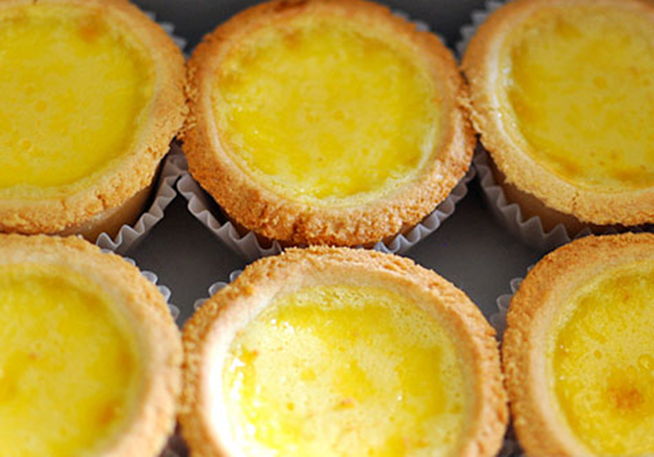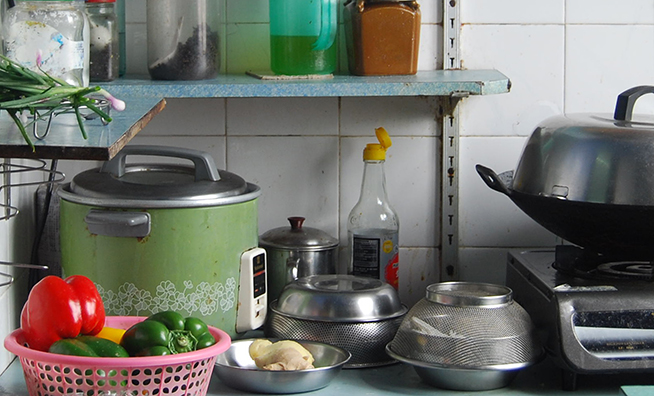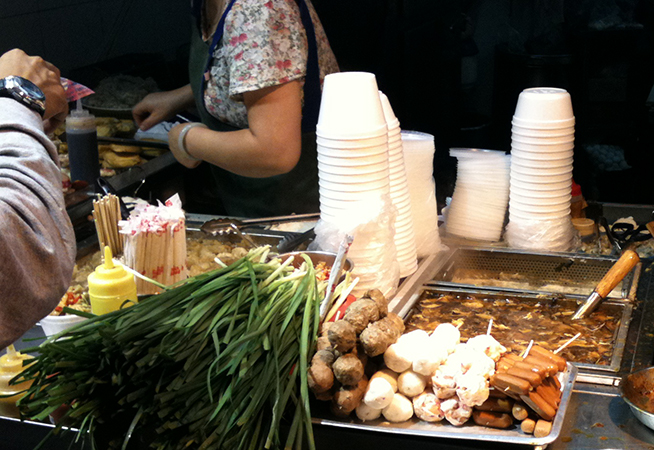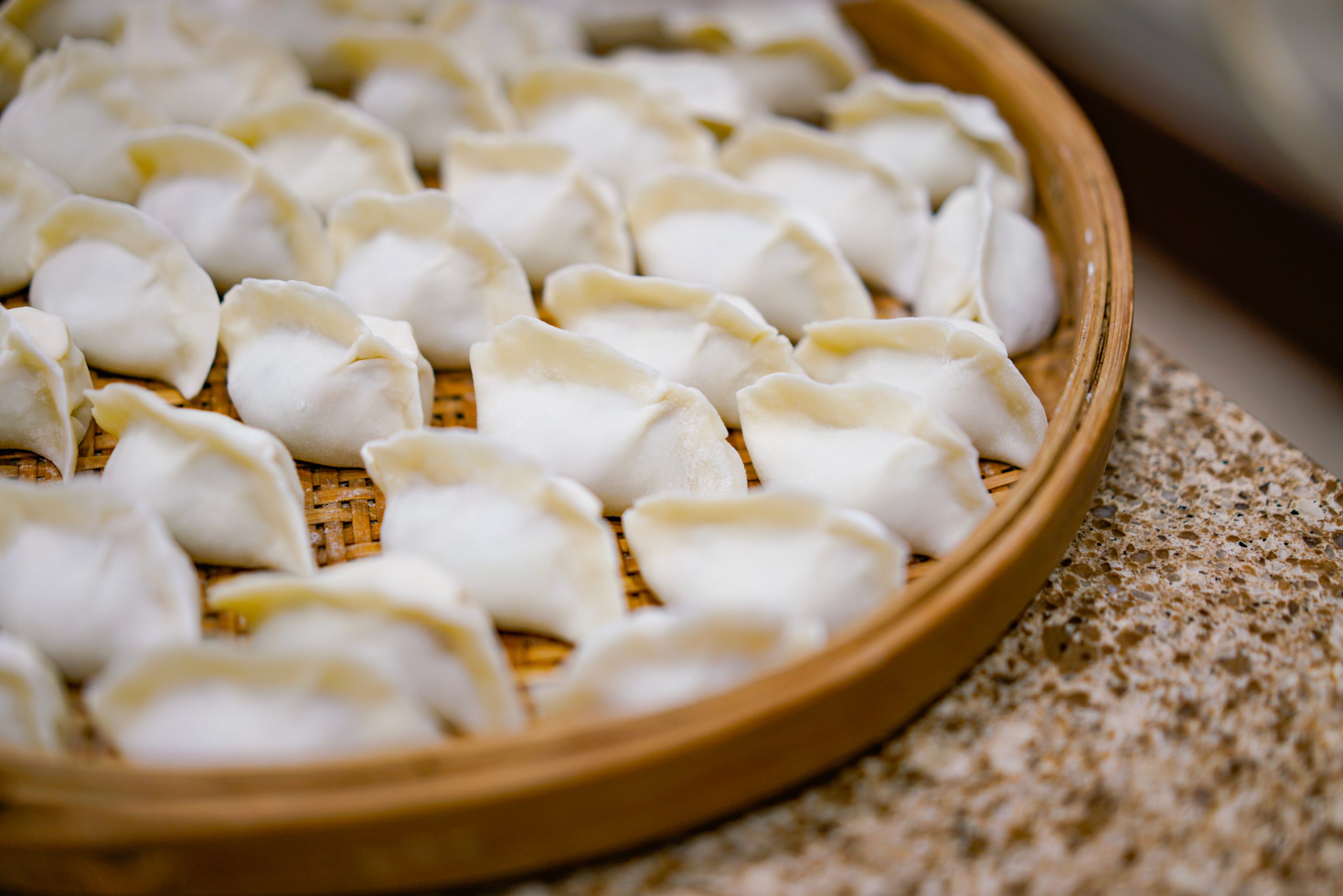Finding Grandma’s Food in Contemporary Asia
- Culture/
- Food & Beverage/
By Janice Leung and Marc & Chantal
Share

Egg tarts are often a symbol of a traditional Hong Kong food.
At a recent Le Salon discussion at Marc & Chantal about the future of food, longtime Hong Kong-based food critic Susan Jung raises the issue that tradition is not an absolute concept, but is always relative to one’s own experiences. “There is nothing traditional about an egg tart, yet people now call it traditional.”
Traditions that present themselves in contemporary life are, by default, people’s own reinterpretations of the past. Maintaining tradition requires people to continually imagine their versions of history. Be it a branding project or a desire to recreate family recipes, a representation of the past is woven from memories and stories told orally, visually or written down.
For instance, a family recipe may be inspired by an early memory of being taught how to cook the dish, or simply the experience of eating it. But while grandma used a wood-burning oven and a clay pot, and taken all day to harvest, clean and cook the dish, today’s home cook shopped for pre-prepared ingredients on the way home from work and cooked it in a pressure cooker. The experience of cooking would have changed, as would the end result that reaches the dinner plate, but certain elements tie the dish, and the person who prepared it, to the past.
Old meets New
Taking imagination of the past as their main driver, and applying modern cooking techniques and environments, contemporary chefs such as Heston Blumenthal and David Thompson have created new restaurant concepts that are admired and celebrated in food circles across the globe. Blumenthal takes inspiration from British food history to whimsically recreate dishes at his London restaurant Dinner, while Thompson presents a more serious experience with his scholarly approach to Thai cuisine. After moving his restaurant, Nahm “back home” to Bangkok it has been met with mixed reviews, perhaps the notion of an Australian reinterpreting Thai culinary history does not align with how some prefer to see their past. Similarly, Hong Kong’s Bo Innovation, known for its “Extreme Chinese” cuisine, receives mixed reviews locally, but opened in London to critical acclaim. Unlike Thompson, however, Alvin Leung, the chef behind Bo Innovation, does not make claims about a historic angle, but references flavours familiar to the contemporary audience.

Many people are finding they have less time to eat at home, let alone for cooking at home.
No place like home
“Family cooking is facing a challenge… recipes might disappear. Its not only that we won’t make the food but we will miss some intergenerational communication and family histories,” says Sidney Cheung, Chairman
and Professor of Anthropology at the Chinese University of Hong Kong, discussing the future of food. With more Hongkongers’ working longer hours, fewer people are learning family recipes. Also, the sheer number and ease of access to eateries further dissuades many diners from taking the time to cook at home.
In recent years, a number of changes have come to fill this home cooking void. For some, it has triggered the need to document heirloom recipes, while learning more about their origins. One such example is Grandma Grandpa Cook, a book of recipes and stories collected from more than 40 senior citizens who made Hong Kong their home before World War Two. From nourishing soups to laborious desserts, each dish tells a story, be it of poverty, war, immigration, ethnicity or happy accidents.
The need for “tradition” as a narrative behind food is also evident in the recent proliferation of food brands and restaurants across Asia claiming to serve flavours of the past. In Taiwan, the buzzword guzaowei (ancient flavours) is found from retro cafés to pineapple cake souvenirs. In Hong Kong, food magazine editors have been swooning over everything waai gau (nostalgic).
Holding on to the past
Perhaps our need to rediscover and document the halcyon days is born from the fact that old businesses, which we once took for granted, are fast disappearing. In both Singapore and Hong Kong, food hawkers are beginning to shutter. In the case of street food hawkers in Hong Kong, licensing laws prevent hawker stalls from surviving beyond the license holder’s death, with the exception of around two dozen stalls in Central, which have been granted extensions. In Singapore, it is largely due to lack of new talent that is willing to respect the laborious cooking methods employed by cooks of previous generations.
Central to the Singaporean way of life, there has been a lot of talk about how hawker food can continue to flourish. This year, the Singapore government along with private sponsors launched the Hawker Master Trainer Pilot Programme, where veteran hawkers will train 50 young students. Also announced this year, is the construction of ten new hawker centres, replacing ones that have been demolished and building them in communities that previously lacked them. Five of the ten are expected to be completed by 2016.
The Singaporean youth themselves have also taken an interest in preserving local food culture, as seen by a small but significant number of young hawkers offering everything from hipster ramen to classic rojak, much like the foodtruck renaissance seen in the United States in the past decade. Initiatives such as Youth Hawkerprise, a class project by four students of Nanyang Technical University, presented a series of business workshops for young aspiring hawkers. Sessions covered the entrepreneurial skills necessary for success as well as culinary knowledge.

Hawker food culture still thrives in Hong Kong, even as the government tightens restrictions.
Businesses take the cue
Revitalisation of old businesses can also be achieved through rebranding which, in a sense, repurposes histories in order to better connect them to contemporary audiences. Chinese herbal tea brand Hung Fook Tong launched an advertising campaign in 2008 with the message that their teas and soups were “almost as good as mum’s”. Their shops are dotted all around Hong Kong, including many MTR stations, and fill the need for fast food that has some of the benefits of home cooking.
Branding repurposes histories in order to better connect them to contemporary audiences.
In the late 1990s, Kee Wah, a 75-year-old Hong Kong bakery chain, threw itself into the new millennium with a thoroughly modern redesign of their packaging, which was launched simultaneously with a major advertising campaign. The slogan that put them on the map declared, “Hong Kong finally has souvenirs to call its own” appealing to the post-colonial Hong Kong identity that sees itself as neither British or Chinese, but Hongkongese. More recently, a campaign promoting Chinese wedding pastries, the popularity of which was in decline, combines modern-day romance with the tradition of wedding pastries. It is no longer the norm for Chinese weddings to be organised by the bride and groom’s parents, so it was essential to make their product appeal to a younger audience.

It appears that the future of food is not about leaving the past behind, but relies instead on our ability to tap into our shared memories for inspiration. Perhaps this approach will connect with our modern lifestyle and satiate our cravings for all things “authentic”. Being able to communicate those moments, and to interpret them successfully – through family recipes, branding campaigns, or high gastronomy – is essential to moving forward. •
— Janice Leung is a food writer and farmers’ market founder with a deep love of food – its sources, makers, sellers and eaters.
